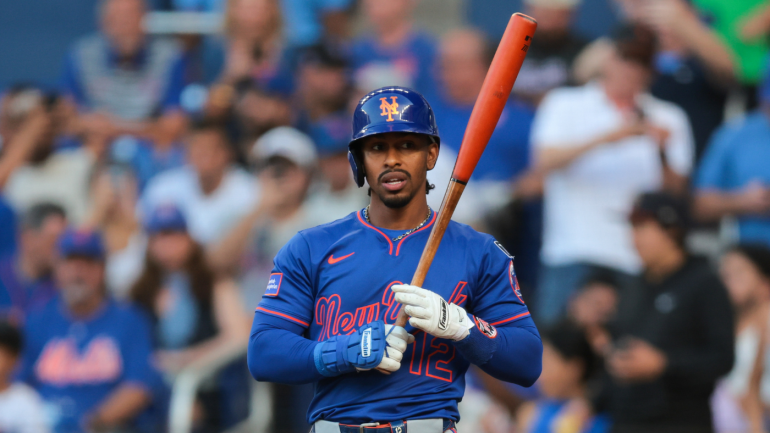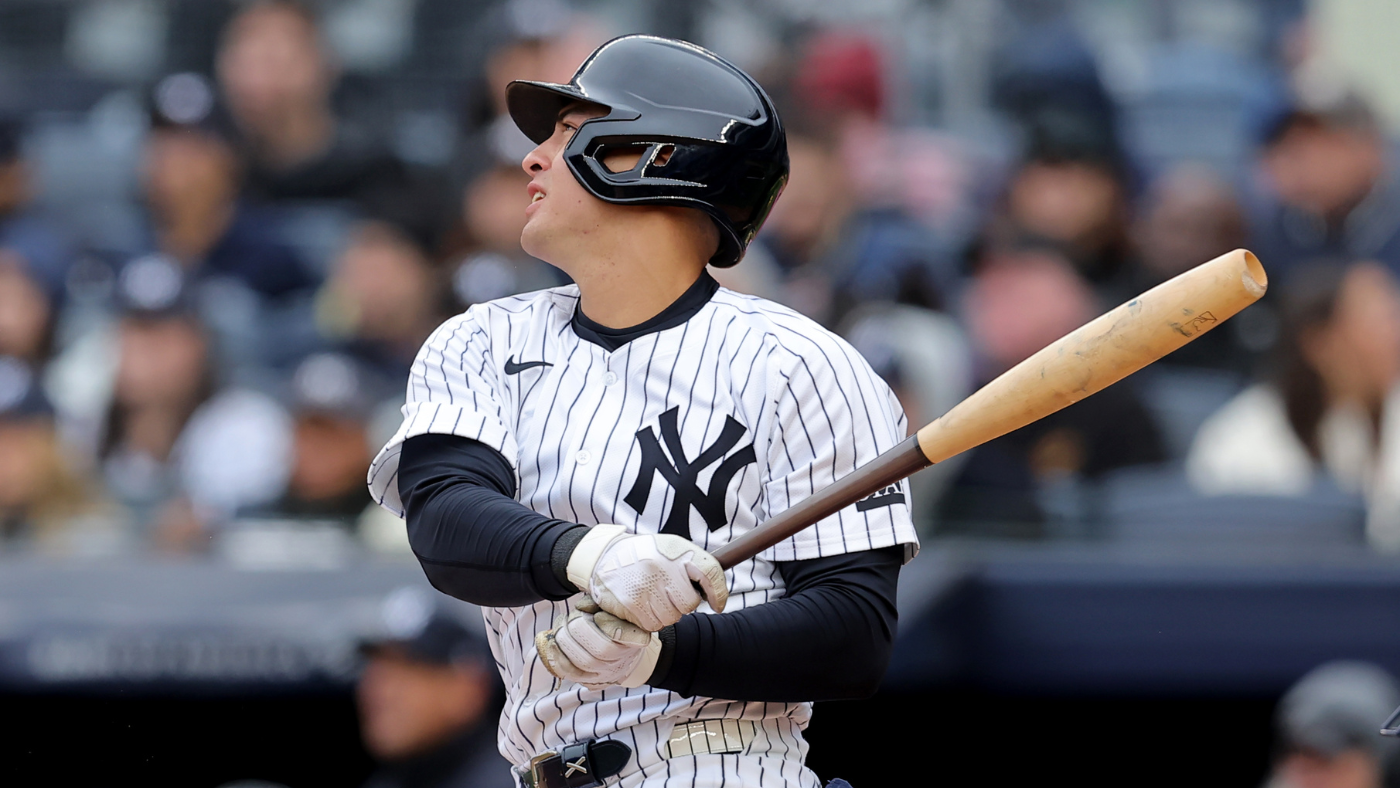
One of the great features of baseball is how often this old sport learns a new trick. They've been playing the game since the 1800s, yet every season brings an innovation to the forefront. Sometimes it's a completely new idea, other times it's the evolutionary progression of an old one.
Sure enough, the first week of the 2025 Major League Baseball season has already put on display some new concepts. These range from the dawning of a new bat model to the embrace of new pitches and even to the unveiling of new ways to analyze the action.
Below, we here at CBS Sports have highlighted three particular new ideas that have captured our attention this spring -- and that, with any luck, just might do the same for you.
1. Torpedo bats
Obviously we must start here. The torpedo bats have been the talk of the season's first week due to a confluence of factors. Note to all the bat manufacturers in the crowd: the easiest way to generate millions upon millions in brand-name recognition for your new bat model is to have a television broadcast talk about how some New York Yankees are using them during a team-wide home run derby.

The premise of the torpedo bat is straightforward: by shifting mass to areas where some hitters are more likely to connect, they should increase the chances of solid contact and reduce the chances of a whiff. These bats are perfectly legal since they fit MLB's required specifications, and while every team either has some (or is getting some), there are some real trade-offs for every batter to consider.
Besides, there's presently no way of knowing for sure how much impact these torpedo bats will have -- even the people who work inside front offices are in the dark. Check back in a few months when we've gained a fuller understanding.
2. The rise of the splitter
The split-finger fastball itself is nothing new by any means. It's been nearly a half century since the trio most commonly identified as the splitter's forefathers -- Fred Martin, Bruce Sutter, Roger Craig -- were at the peak of their powers. Nevertheless, the splitter is more popular now than at any other point during the pitch-tracking era (meaning from the beginning of the 2008 season onward).
Entering Tuesday's action, MLB pitchers had a collective 3.6% splitter usage rage. That may not sound like a lot, but let's put it this way: the sum of the league's splitter usage in 2022-2023 was 3.8%. Again, that's the sum of two recent seasons -- not the average or the overall usage rate. Folks have been predicting that the splitter would become MLB's new It Pitch for years. It's too early to declare those forecasts correct, but it sure appears that teams have warmed up to the splitter -- and quickly. (As an added bonus, Leif Strom's "kick change" pitch has gained in popularity, too.)
In fact, two pitching staffs are throwing the splitter more than 12% of the time so far: the Toronto Blue Jays and Los Angeles Dodgers. The Blue Jays are being led in this respect by Kevin Gausman, Jeff Hoffman, Bowden Francis, and Nick Sandlin; the Dodgers by Kirby Yates, Yoshinobu Yamamoto, Luis García, and Roki Sasaki. Five of those eight pitchers were acquired over the offseason, suggesting either the Blue Jays and Dodgers are open-minded about splitters for a reason, or they stumbled into becoming the two most splitter-friendly teams in the majors. We know which is more likely.
3. Limb-tracking data
We'll close out by highlighting some old concepts being made new again through quantification. You know what we mean if we reference terms like "bat speed" and "swing length," and you can probably guess what "intercept point" and "stance angle" are all about. All those ideas (and the numbers formed from them) are part of Statcast's latest rollout of select limb-tracking metrics.
What you need to know is that every stadium has a bunch of cameras set up to track player movement. The information gleaned from those cameras can then be turned into handy dandy measures that can confirm or challenge the eye test on various observations. Does Tampa Bay Rays rookie Junior Camerino have an exceptionally fast bat? Yup. Does Rafael Devers have an extremely open batting stance? The most open in the majors, per the data. Meanwhile, his Red Sox teammate Kristian Campbell has the most closed stance in the league. And so on.
Of course, all this new information should help improve analysis of those players. Now, we'll be able to say with certainty if a player is swinging their bat harder, or if they've made legitimate tweaks to their batting stance or their point of contact. At least in theory, it's possible that our understanding of hitting will make gains like our understanding of pitching did with the invention of PITCHf/x.
![[object Object] Logo](https://sportshub.cbsistatic.com/i/2020/04/22/e9ceb731-8b3f-4c60-98fe-090ab66a2997/screen-shot-2020-04-22-at-11-04-56-am.png)


















